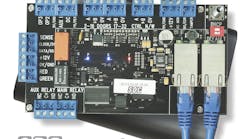The Transportation Security Administration (TSA) announced it is expanding to a fifth airport the capability of detecting explosives on passengers at the security checkpoint. Testing and evaluation of the explosives detection trace portal will begin this week at Gulfport-Biloxi International Airport. TSA also announced that this pilot project, along with those initiated at four other airports, will continue for the foreseeable future.
"This is an exciting development for TSA and we welcome the opportunity to test this new technology here at Gulfport-Biloxi," said Patrick E. Baroco, TSA Federal Security Director at the airport. 'This device is another example of TSA deploying the most advanced technology to the front lines of the war against terrorism.'
In June, TSA began testing the trace portal at passenger security checkpoints at T.F. Green State Airport, Providence, R.I., and Greater Rochester (N.Y.) International Airport. In July, testing began at San Diego International Airport and in August at Tampa (Fla.) International Airport.
At Gulfport-Biloxi, passengers who enter the checkpoint lane with the trace portal machine will place their carry-on baggage on the conveyer belt to be screened by X-ray, and then be asked to step into the trace portal. There, passengers will stand still for a few seconds while several quick 'puffs' of air are released. The portal will analyze the air for traces of explosives and a computerized voice will tell passengers when to exit. Passengers will then go to the walk-through metal detector and once cleared, collect their carry-on baggage from the X-ray exit belt.

